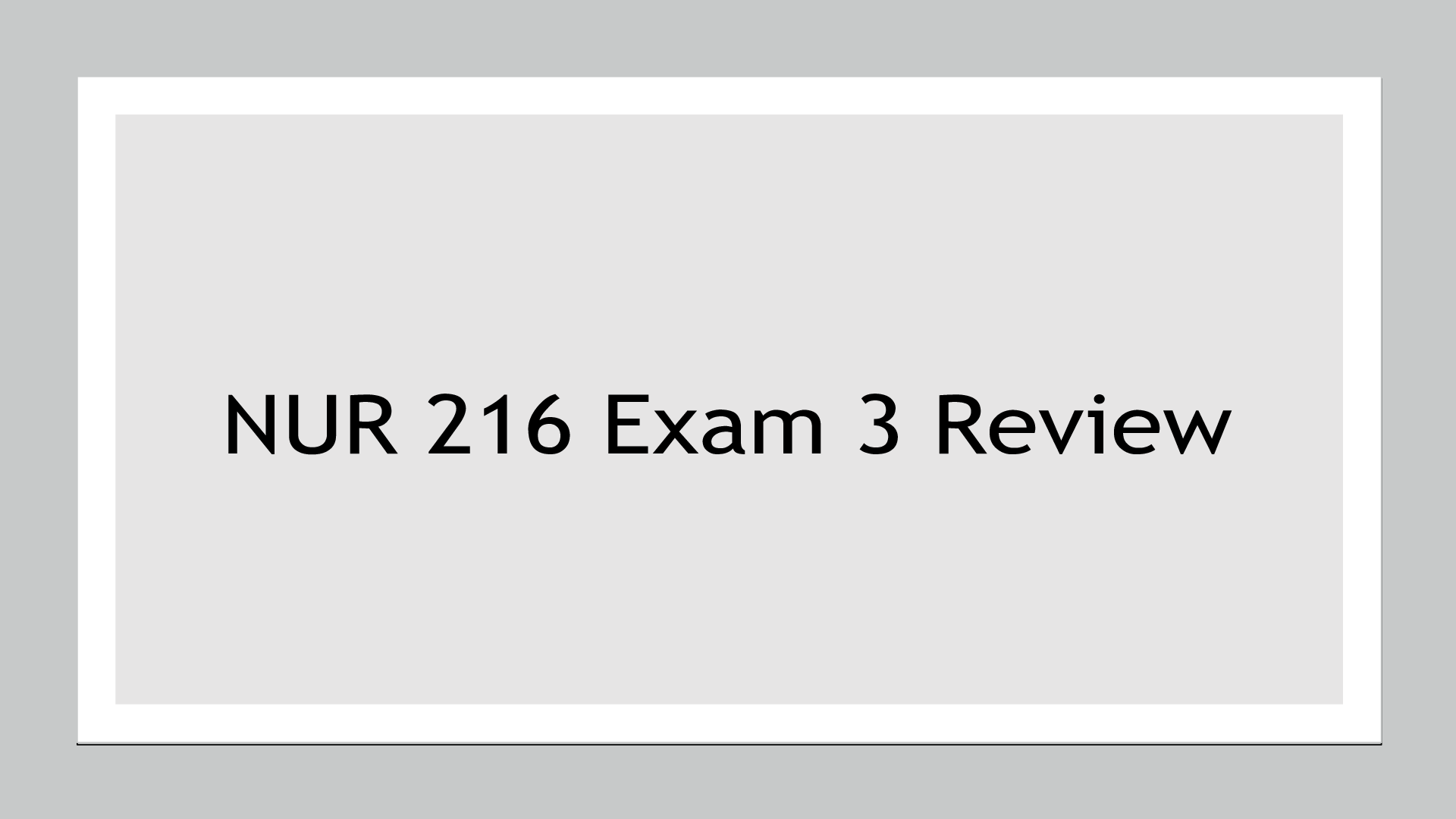*NURSING > Final Exam Review > Thao Ticket Final Post op colon resection Medical Surgical GI # 24 (All)
Thao Ticket Final Post op colon resection Medical Surgical GI # 24
Document Content and Description Below
Course Objectives (COs): By the end of the course, the student should be able to: 1. Identify competent nursing care for clients with chronic conditions, utilizing evidence-based practice guidelines ... (SLO 1,2,5). 2. Differentiate care needs of the elderly adult experiencing alterations in health (SLO 2,3,5). 3. Acknowledge legal and ethical issues in healthcare (SLO 3). 4. Prioritize nursing care for patients with chronic alterations in health (SLO 1.2.4.5). 5. Develop an individualized teaching plan for the client with the goal of improving and maintaining personal health (SLO 1,2,3,4). 6. Correctly calculate medication doses appropriate for the population (SLO 1,5). THOROUGHLY ANSWER THE FOLLOWING COMPREHENSIVELY and submit 24 hours BEFORE SIMULATION TIME (48 hours preferable). Incomplete tickets will be returned for redo, and must be in before the simulation. **ANSWERS MUST BE paraphrased AND CITE PROFESSIONAL source (Author, year, page). 1. In your opinion, based on understanding (through research) Buddhism and health care, how might Mr. Thao’s religion and culture affect health care decisions? Mr. Thao’s religion and culture might affect his health care decision because there is already a stigma that Buddhist should not take medication unless it consists of all natural properties. This can mean that Mr. Thao will refuse to take any opioids even if he is in severe pain. 2. Create a CBC and BMP reflecting individual values (as “high”, “low”—no need for individual values) that demonstrate a fluid volume deficit Lab: CBC (HGB, HCT, Platelets) 19g/dL(H), 67% (H), 370K Fluid Volume Deficit - High Potassium: 5.4(H) (“high” or “low”) 3. List 3 possible causes of fluid volume deficit in the post-operative colon resection patient. Excessive urination caused by excessive intake of medication for renal disorder. Vomiting and diarrhea from the GI system Excessive sweating 4. Paraphrase your understanding of the pathophysiology of third-spacing. What occurs in the red blood cell with isotonic, hypertonic, and hypotonic fluid resuscitation? This study source was downloaded by 100000829878664 from CourseHero.com on 10-13-2021 00:38:55 GMT -05:00 Third spacing is when fluid is trapped in areas where there is normally little or no fluid. It normally restricts the organs function for example, ascites. In isotonic solutions, RBC’s are leveled out between the interstitial fluid. Hypertonic solution is where the water will leave the cell causing shrinkage in the cell. Hypotonic solution will pull water into the cell causing the cell to burst. 5. When rehydrating the patient who is third spacing, which, in your opinion, is the greater cardiac concern -- preload or afterload? Explain your answer. Cardiac afterload is a greater concern because as there is fluid in areas that contain little to no water, it can heavily reduce cardiac output that mainly affects the afterload of the heart. 6. Using evidence-based research, how long are absent bowel sounds expected throughout in the post op GI patient? When do they return, in what order? How long is a low-grade fever expected. When should the nurse become concerned? Absent bowel sounds are a normal finding in the post op GI patient. Bowel sounds should begin to return to normal within 2-4 days after surgery. Bowel sounds are no longer considered absent when the patient first passes gas. Once the patient begins consuming clear fluids, bowel sounds should be able to be auscultated with a stethoscope. When the patient moves to a solid diet, bowel sounds along with some percussion dullness due to fecal masses in the colon are to be expected. A low grade fever is also an expected finding after GI surgery but should resolve after one week. The nurse should be concerned if the fever and absent bowel sounds persists longer than one week. The nurse should continue to monitor the patient for other changes in post operative conditions such as inflammation, infection, wound discharge and dehiscence during this time. 7. Compare the symptoms of hemorrhage and third spacing following gastrointestinal surgery. How are they different? Symptoms of hemorrhage include abdominal pain, black tarry stool, vomiting, abdominal swelling. Third spacing symptoms are fluid loss from diarrhea, vomiting, weight gain, tachycardia, hypotension. They differ because third spacing is a lot more challenging to measure fluid loss .....................................................................................continued.................................................................................. [Show More]
Last updated: 2 years ago
Preview 1 out of 8 pages

Buy this document to get the full access instantly
Instant Download Access after purchase
Buy NowInstant download
We Accept:

Reviews( 0 )
$7.50
Can't find what you want? Try our AI powered Search
Document information
Connected school, study & course
About the document
Uploaded On
Oct 13, 2021
Number of pages
8
Written in
Additional information
This document has been written for:
Uploaded
Oct 13, 2021
Downloads
0
Views
102




.png)





.png)


